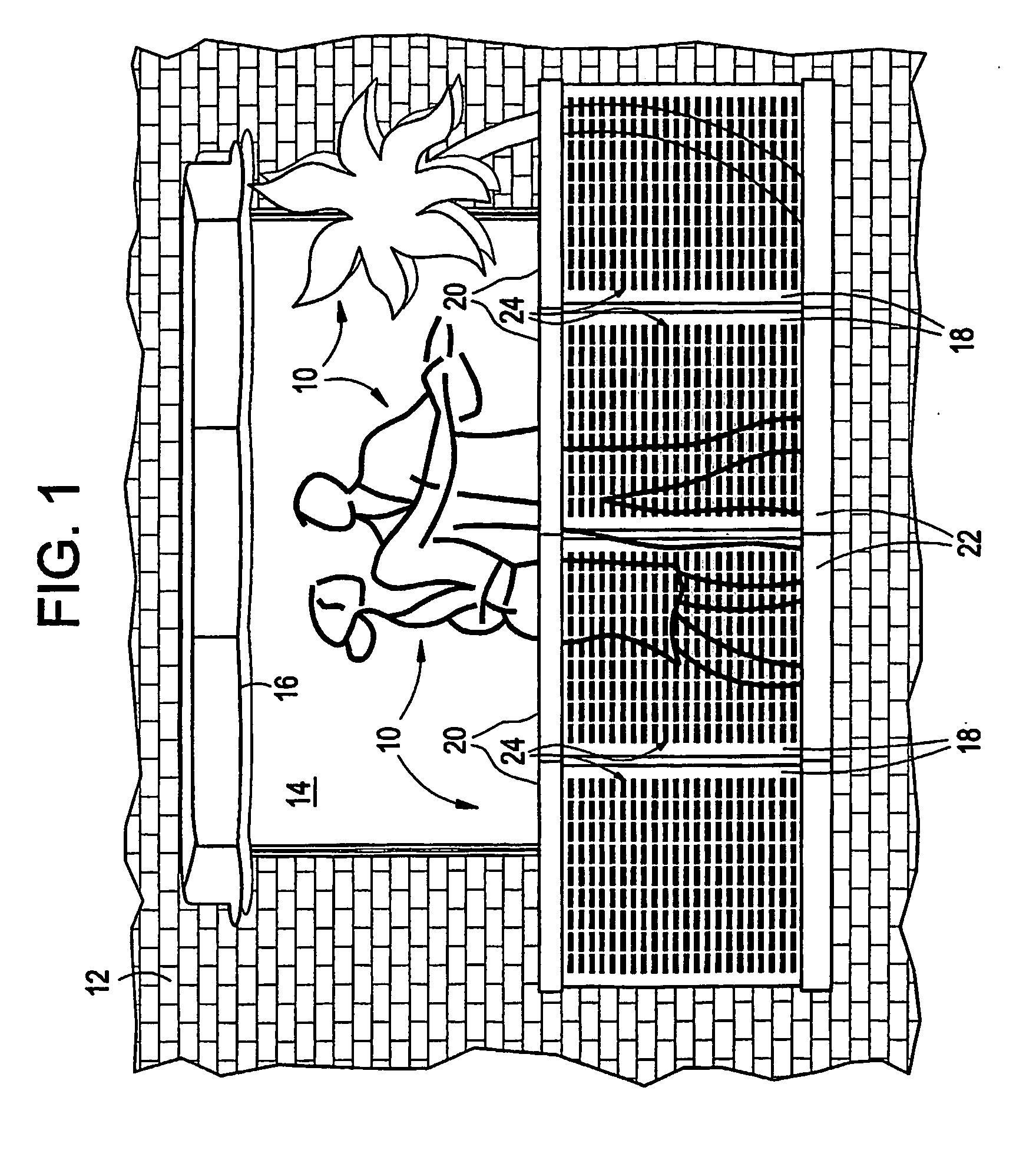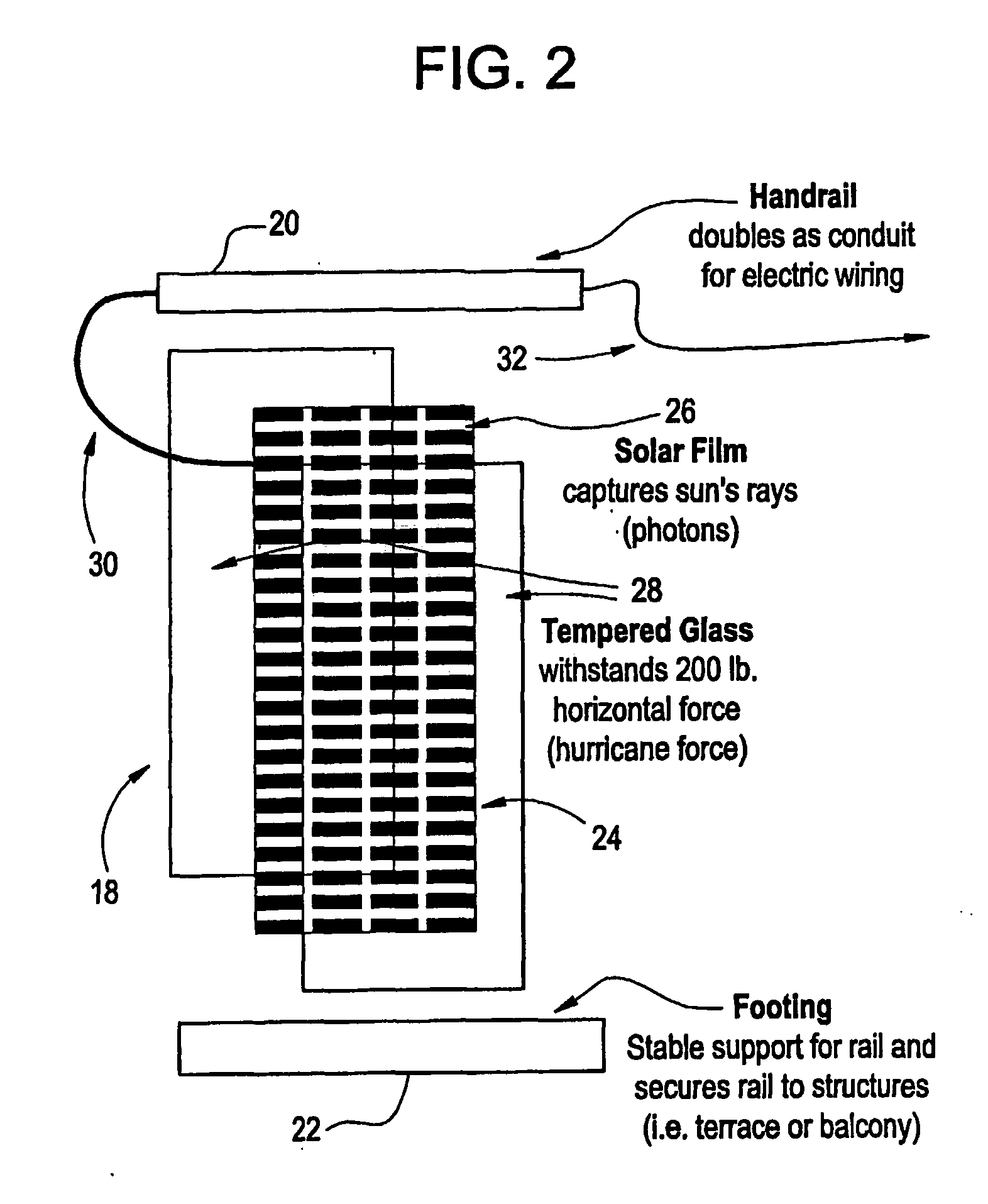Solar rail or railing system
a solar panel and solar panel technology, applied in the direction of light radiation electric generators, generators/motors, lighting and heating equipment, etc., can solve the problems of difficult and dangerous access to locations, the area of roofs that may receive solar panels relative to the volume of buildings that need electric supply is too limited, and the cost of transmission creates a second problem
- Summary
- Abstract
- Description
- Claims
- Application Information
AI Technical Summary
Benefits of technology
Problems solved by technology
Method used
Image
Examples
Embodiment Construction
[0019] In FIG. 1, people and plants at 10 stand on a projecting balcony (not shown) of a building portion 12. An entry 14 from the balcony into the building may be shaded by an awning 16 but, as general in such cases, the awning would not project far enough from the building to shade as well panel sections 18 about a perimeter of the balcony as part of a solar rail or railing system.
[0020] The panel sections have respective top rail sections 20 and bottom rail sections 22. The top rail sections interconnect to form a top rail element or handrail and the bottom rail sections interconnect to form a bottom rail element all along the panel sections for structural strength. The bottom rail element or footing provides a stable support for the panel sections and secures the panel sections to a building structure such as the balcony or terrace, which is behind it in this embodiment and, therefore, not shown.
[0021] The panel sections have respective arrays of discrete, opaque solar cells a...
PUM
 Login to View More
Login to View More Abstract
Description
Claims
Application Information
 Login to View More
Login to View More - R&D
- Intellectual Property
- Life Sciences
- Materials
- Tech Scout
- Unparalleled Data Quality
- Higher Quality Content
- 60% Fewer Hallucinations
Browse by: Latest US Patents, China's latest patents, Technical Efficacy Thesaurus, Application Domain, Technology Topic, Popular Technical Reports.
© 2025 PatSnap. All rights reserved.Legal|Privacy policy|Modern Slavery Act Transparency Statement|Sitemap|About US| Contact US: help@patsnap.com



